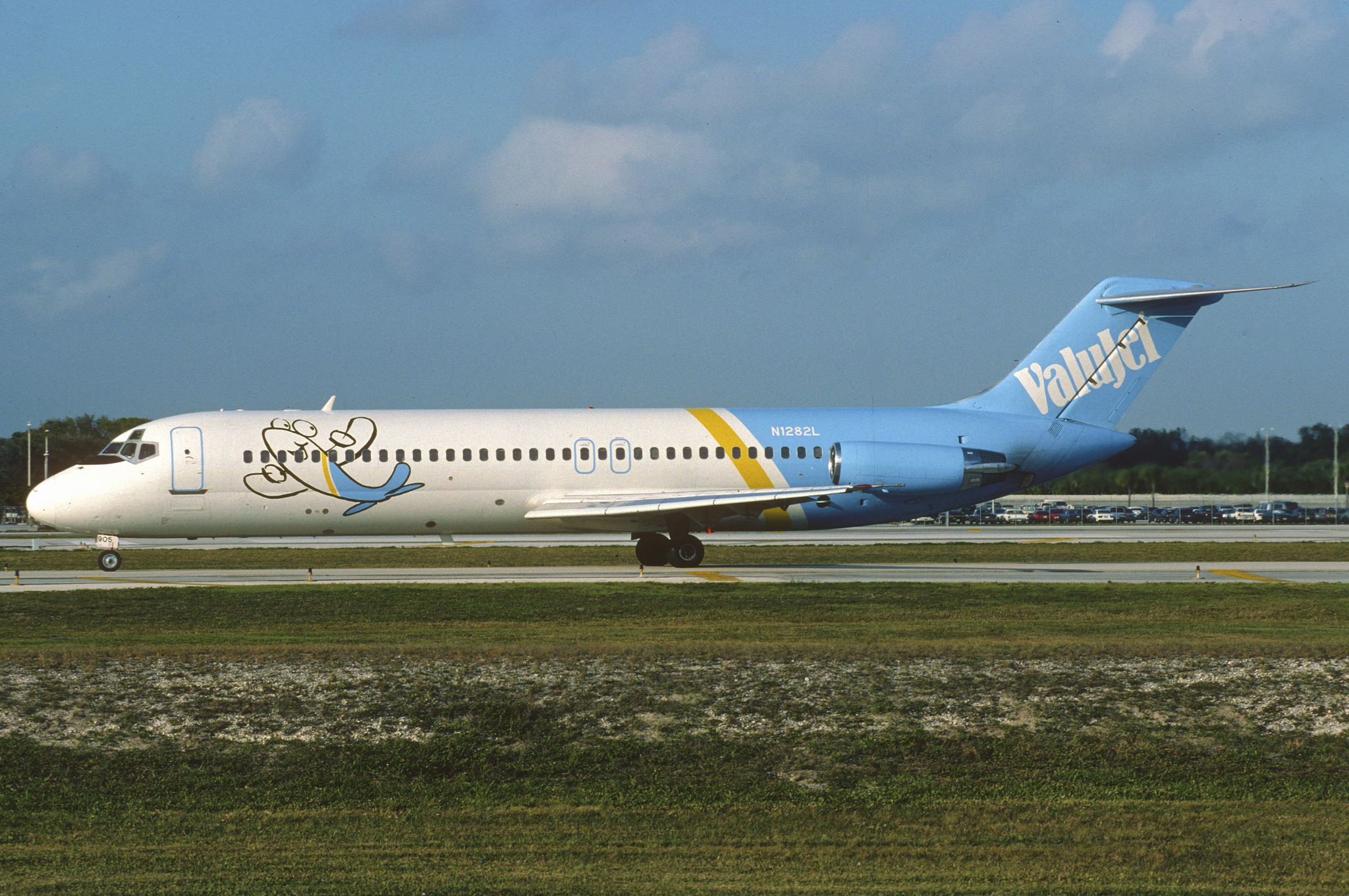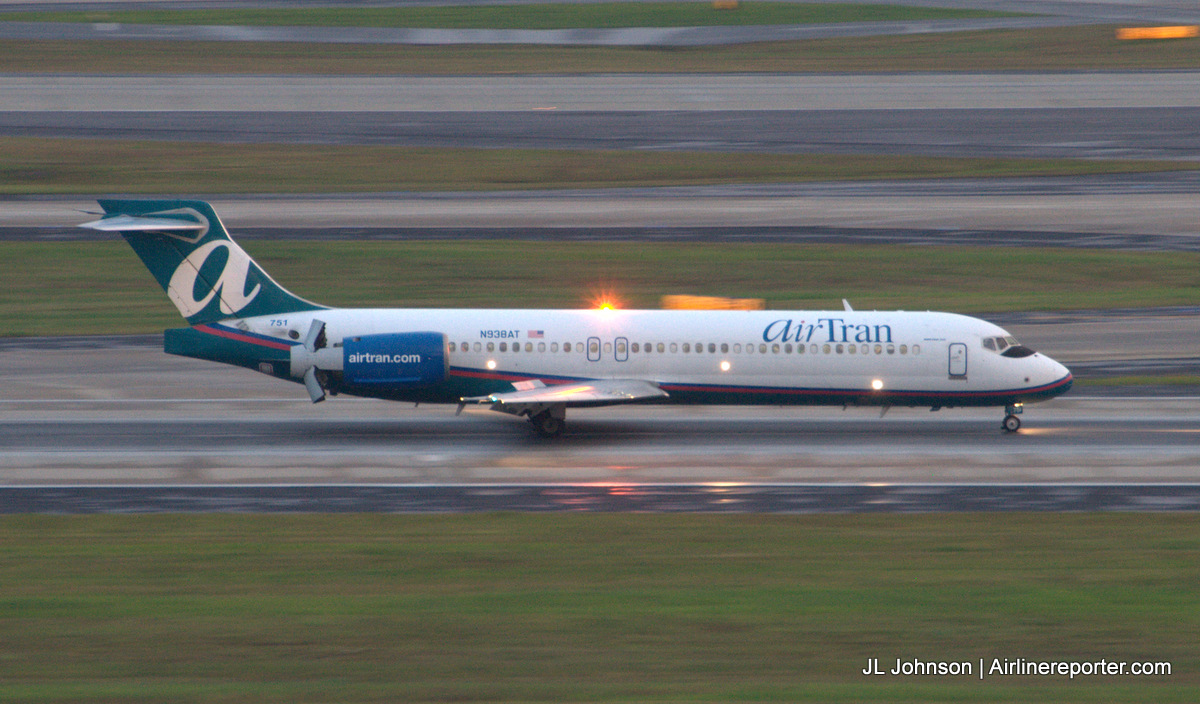
An AirTran Boeing 717 lands in Atlanta
On December 28, 2014, AirTran flight 1 departed Atlanta for Tampa, retracing the airline’s first flight and bringing an end to its remarkable history. I had the honor of being on that last flight and I am excited to share my story. But before I discuss the end of “the big little a” I’d like to first revisit the airline’s history. Because only through knowledge of the airline’s legacy can we truly understand the significance of AirTran’s retirement and integration into Southwest Airlines. So sit back, relax, and enjoy.
ValuJet: Fun and friendly’¦ And perhaps a bit dangerous.
AirTran traces its roots back to ValuJet, an Atlanta-based upstart with dreams of chipping away at Delta’s dominance right in its own backyard. Operations commenced with just a single DC-9, and its first flight was from Atlanta to Tampa on October 26, 1993. In just over a year the airline was solidly profitable and its route map had grown to 17 cities. But fast growth and aggressive cost-cutting practices quickly caught up to the Critter (ValuJet’s FAA call sign.) In the first few years of operation, the small airline had a markedly-high percentage of emergency landings, compared to its peers. In addition, an FAA study indicated that ValuJet dominated the accident data for low-cost carriers.
On May 11, 1996, ValuJet flight 592 went down en-route from Miami to Atlanta; all 110 on board were lost. This tragic, high-profile accident would focus attention on the airline, its maintenance practices, and ultimately lead to its grounding. After a month of investigations by the FAA, which reveled “serious deficiencies in its operation” ValuJet would voluntarily halt operations. But this wasn’t the end for the fledgling airline that had lost its way. Instead, it was just the beginning.

The A350 flight deck being shown off by its joyful flight crew – Photo: Bernie Leighton | AirlineReporter
For press, the delivery ceremony completion usually means it is either time to drive back home, or return to the hotel and pack for the flight.
Not this day.
Airbus and Qatar Airways decided that it would be a great way to enhance the press experience if everyone was given a demonstration flight aboard the Airbus A350.
This was a great idea, so there had to be some kind of drawback! For a demonstration flight that would last an hour with pre-selected passengers, all 200 of us present had to go through security screening. A process that felt like it took longer than the flight itself. What a surprise, no one had any contraband or ill intent!
Rant aside, after what felt like an eternity, I finally made it onto the jet bridge to a crowd that was more akin to being in the last row of economy on a domestic narrowbody. I realized then and there that taking any kind of photographic imagery was going to be a challenge.
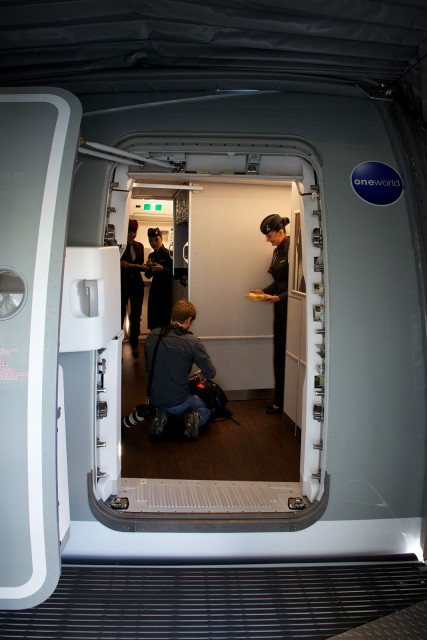
Door L1 on Qatar Airways’ first A350 XWB, long after the crowd had dispersed for lunch Photo: Bernie Leighton | AirlineReporter
We boarded via a choice of either L1 or L2, I chose L2 as I wanted to see the lovely dome light and the in-flight bar. The doors themselves do not create any temporary feelings of claustrophobia. In the case of L2, you immediately walk into a spacious and open atrium. The ceiling is higher than one has come to expect on regular passenger aircraft, the walls more vertical.
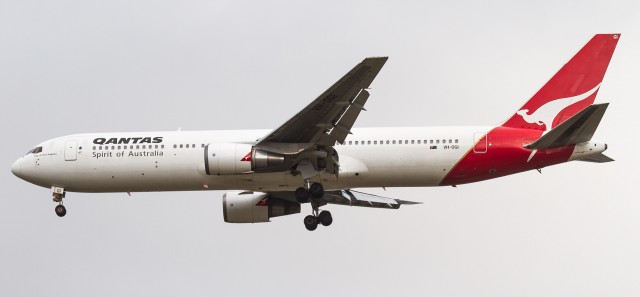
Qantas’ Boeing 767-338ER, a common sight in Australian skies over the past 30 years – Photo: Jacob Pfleger | AirlineReporter
The 27th of December marked the end of an era in Australian aviation. Qantas retired the Boeing 767 fleet from passenger service.
Let’s take a brief look at the history of this true workhorse and Australian icon that has been part of the Qantas fleet for almost 30 years. Qantas took delivery of its first 767, a -200 series extended range aircraft, in 1985. The type was first introduced on the carrier’s services to southeast Asia as well as on trans-Tasman and Pacific routes.
In 1987, the carrier placed an order for the larger -300ER series. The -300ER not only had a larger capacity but also an increased range and more powerful General Electric CF6-80 engines. The 767-300ER was delivered to Qantas in a two-class configuration. There were two variants of this configuration, one for international service which had 25 business class and 204 economy class seats, and the domestic configuration, which had 30 business class seats and 224 economy class seats.
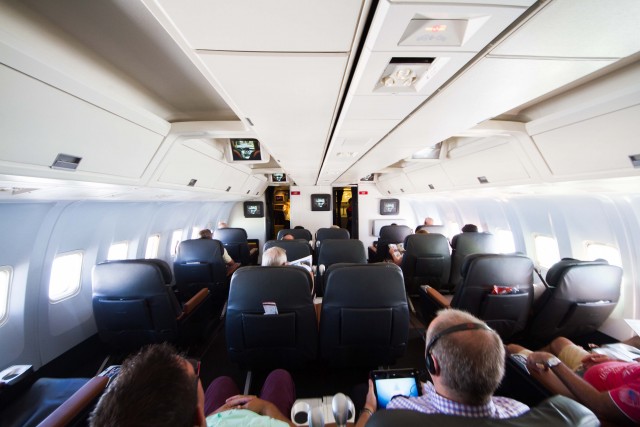
A unique configuration, 1-2-2 on the international version of the Qantas Boeing 767-338ER – Photo: Jacob Pfleger | AirlineReporter
The internationally-configured 767s were unique in that business class was configured in a 1-2-2 layout, and the 767s were the first Australian aircraft to offer in-seat IFE in business class. The economy cabin was also unique in that there was a “pod” at the front of the cabin for crew rest, as well as two rows of seats at the rear portioned off for additional crew rest.
Following the deregulation of the Australian domestic market in 1990, Qantas was permitted to once again operate domestic flight routes. With the introduction of the 767 into the fleet, and the domestic deregulation which allowed for increased passenger demand, Qantas used the 767 on domestic Australian flights. The domestic market is where the aircraft really became a true Australian icon. It was deployed on pretty much every major domestic route within the country; the most popular routes were the transcontinentals to Perth, as well as the main east coast triangle routes connecting Sydney, Melbourne, and Brisbane.
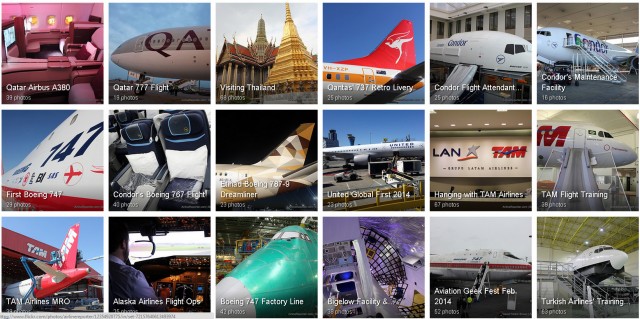
Some of the fun had this year
A new year always gives us a chance to step back and see what we enjoyed in the previous year, how much we have grown and changed, and what we look forward to in the new year.
I have to say that I am so proud of what our team has been able to do in 2014. We have become a true team of dedicated folks who love to share our passion for aviation and airlines. We also love how the AirlineReporter family has grown (that includes you, amazing readers). We have been given bigger and better opportunities and we couldn’t do it without our readers supporting what we do!
Let’s take a look at our numbers. We had our best month ever in 2014, with hitting a half-million visitors in a month. Man, I remembered how excited I was when we got 5,000. We also surpassed 50,000 Twitter followers and are getting close to 55,000. We have over 6.3 million views on our Flickr page, 2.2 million views of our YouTube videos, over 3,400 Facebook fans, and we recently started our Instagram account (and could use a bit more love there).
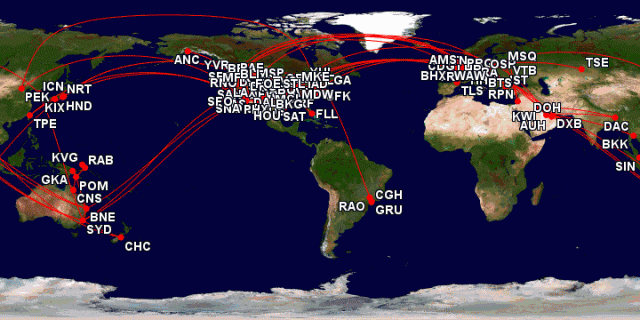
Many miles flown by our team to cover stories – Image: gcmap.com
Our team flew over 360,000 miles in 2014, which is about 30,000 miles more than 2013. We once again didn’t make it to Africa (we did in 2012), so that is a big goal for us in 2015. Since the site was started in 2009, we have flown over 921,600 miles. That means that in early 2015, we should hit the 1 million mile mark, which is very exciting (if anyone cares, we flew about 91,000 miles in 2012; 81,000 in 2011; 50,000 in 2010; and only 5,000 in 2009).
So let’s take a look at some of the highlights of this past year…
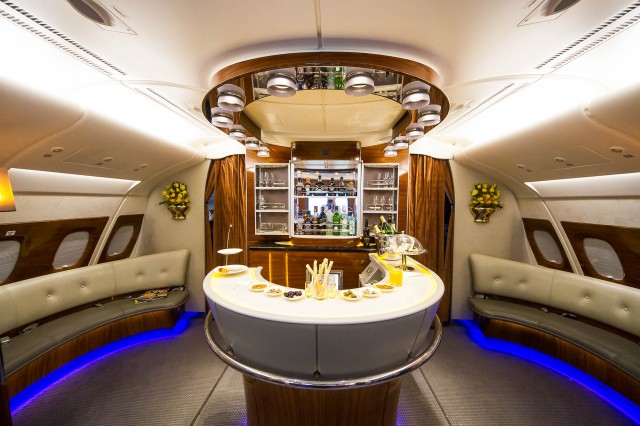
Emirates A380 Bar/Lounge – Photo: Jacob Pfleger | AirlineReporter
In part one of my review, I covered the standard features of the first class suite and product on-board the Emirates A380. In part two, I will cover the unique features of the Emirates A380 available to premium class passengers including the Business Class bar/lounge.
For first and business class passengers, the bar at the rear of the main deck is the place to be and be seen on any A380 flight. It is truly a unique experience and comes complete with a dedicated bartender who will mix up your favorite drink.
Whilst first class passengers get their own bar at the front of the cabin, it tends to be a bit lonely and there is no where to sit; thus, I recommend the business class bar at the back. While the business bar does not have the same high-end beverages as at the first class bar, the crew will happily bring these premium beverages to you when you are in the business bar.
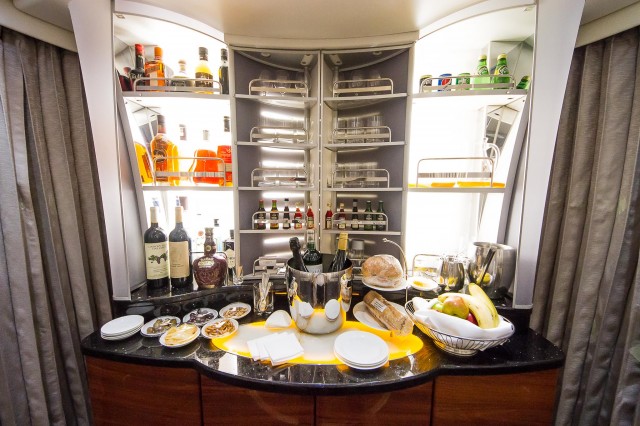
While the first class bar has a wide range of premium beverages, it lacks the atmosphere of the business class bar – Photo: Jacob Pfleger | AirlineReporter
The bar is set up in a fashion akin to what I have seen on many private jets. There is the central bar with lounge seating on either side; this can accommodate up to five passengers on each lounge. In addition to the lounge seating, there is also ample space at the exits which have a standing bar arrangement with a table affixed to the exit which is quite handy when the lounge seating is occupied.
